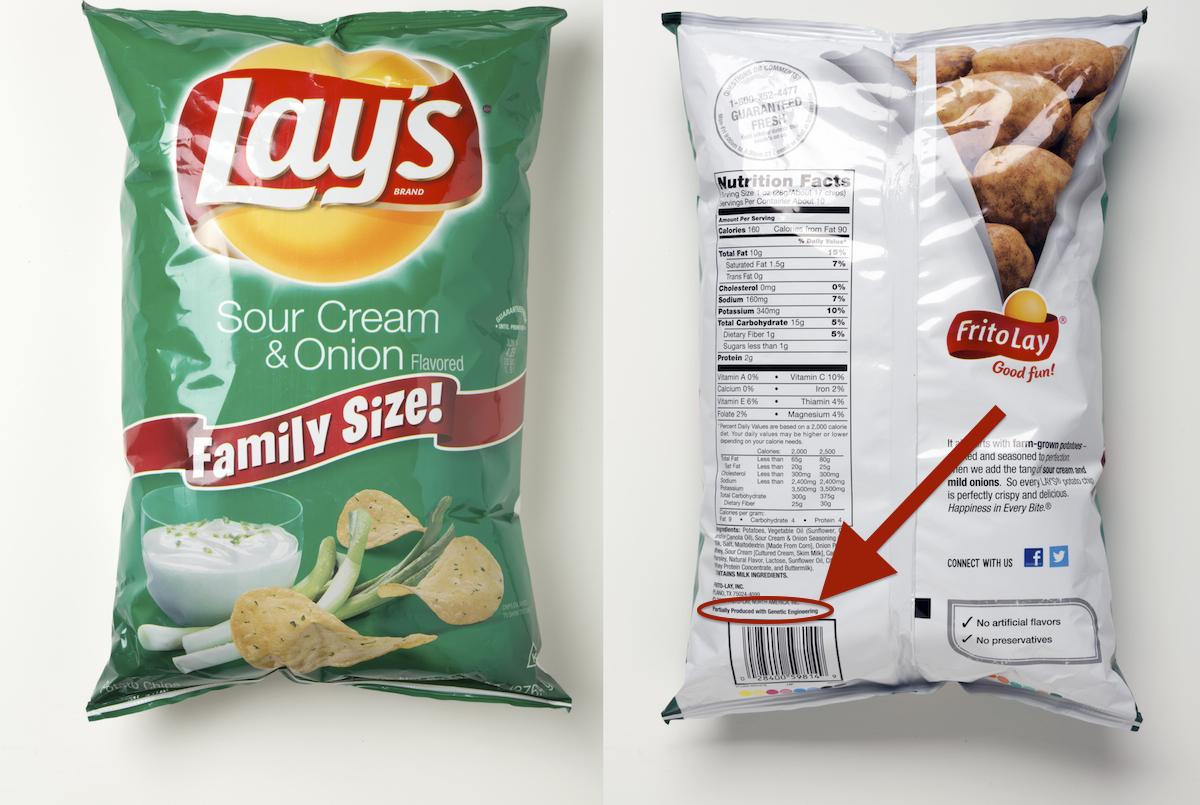To quote Sir James Paul McCartney (CH, MBE), “Can’t buy me love, everybody tells me so / Can’t buy me love, no no no, no.” You also can’t, according to the Food and Drug Administration, list “love” as an actual ingredient in your granola. [More]
food labels

FDA Decides To Delay New Nutrition Labels Until Some Vague Point In The Future
Only weeks after food industry lobbyists asked the Food and Drug Administration to delay the starting date for revised Nutrition Facts labels, their wish has been granted. The FDA has announced it plans to kick this can down the road by extending these deadlines — possibly by as much as three years. [More]

Food Industry Lobbyists Ask FDA To Delay Revised Nutrition Labels For Three Years
Three years after the federal government said it would overhaul Nutrition Facts labels for the first time in 20 years, a group of food industry executives and trade groups are asking the Food and Drug Administration to delay implementing those changes by three years. [More]

Pepsi, Frito-Lay Quietly Adding GMO Ingredient Labels To Some Foods
Whether or not you agree with mandatory labeling for foods containing genetically modified or genetically engineered ingredients, the Vermont law requiring this information on food sold in that state will go into effect on the first of July. Some companies — including Mars, Campbell Soup, and General Mills — have announced decisions to implement these labels nationwide, while PepsiCo appears to be quietly putting labels on its products. [More]

FDA To Reconsider Definition Of “Healthy” On Food Labels
When you see a some food marketed as “healthy” or “natural,” do you know exactly what, if anything, those terms mean? The Food and Drug Administration has decided to rethink its requirements for what it takes to market a product as “healthy,” while advocates and lawmakers are pushing the agency to define “natural” in a way that more people would understand. [More]

Would You Still Eat That If You Knew How Much Exercise It’ll Take To Burn It Off?
There are times when we feel like throwing caloric caution to the wind and just chowing down on whatever we darn please. But if the evidence is staring you right in the face, with cold hard facts about how much exercise it will take to burn off that food or beverage, would you change your eating habits? [More]

Judge: Nestlé, Hershey Don’t Have To Put Child Slave Labor Disclosure On Chocolate Labels
While it might matter to some consumers that slave labor was involved in making that chocolate bar on the grocery store shelf, food companies like Nestlé and Hershey don’t have to disclose what kind of workers are involved in the production process on product labels, a judge ruled this week. [More]

Hampton Creek Explains To The FDA That “Mayo” Is Not Necessarily “Mayonnaise”
Hampton Creek, the company behind an eggless product called “Just Mayo,” has responded to the Food and Drug Administration’s warning that its product isn’t mayonnaise, and thus, shouldn’t be called “mayo.” That seems just fine by Hampton Creek, which recently responded to the FDA by agreeing with it. [More]

New Gluten-Free Labeling Rules Go Into Effect This Week
A year after the Food and Drug Administration laid out the rules for food manufacturers who want to label their products gluten-free, the new labeling requirements will go kick in this week. [More]

Should Food Companies Tell Consumers How Much Sugar They Add To Products?
Looking at the label of any food product on grocery store shelves and you’ll find the total amount of sugar in that item. But does it matter how much of that sugar is from a food’s raw ingredients, and how much sweetener was added? [More]

Grocery Groups Sue Vermont Over New GMO Food Labeling Requirement
Back in April, Vermont became the first state to require food companies to label their products if they contained genetically modified organisms, or GMOs. Now various industry food groups are coming together to fight the rule with a lawsuit claiming the law is a “costly and misguided measure” that in the end, the groups say, won’t help consumers. [More]

FDA’s New Rules: Honey With Added Sweeteners Might Be Sweet, But It Ain’t Honey
Just because something looks like honey, is sticky like honey and is sweet like honey, doesn’t mean it’s the real thing, the U.S. Food and Drug Administration said today in new draft guidelines. That means food companies that add sweeteners to pure honey will have to tell consumers it’s not the totally real deal and label the products as a “blend.” [More]

“Organic” Chicken Is Different Than “Antibiotic-Free” And “Natural” Means Nothing
Once upon a time, not very long ago, you went to the grocery store — not a big box store, or a warehouse club or online — and bought “chicken.” Now the poultry section can be a confusing mish-mash of labels that may not mean what consumers think they mean, or may not mean anything at all. [More]

AJ’s Fine Foods Parent To Pay $1.4M After Charging Customers More For Mislabeled Meat
How do you know you’re not being overcharged at the store? Usually, you don’t — it’s a matter of trust between the retailer and the customer that the listed price is for the food you’re buying. Oh and also, there are plenty of legal regulations regarding correct labeling. That’s why you can’t sell “choice” meat as “prime” and charge more for it. Because of a bit of meat mislabeling, the parent company of AJ’s Fine Foods will be handing over $1.4 million in restitution. [More]

Just Because A Calorie Label Is Green Doesn’t Necessarily Mean It’s A Healthier Product
When you see the color green in the context of food, what usually pops to mind? Healthfulness, vegetables, nutritious ingredients, perhaps? You’re not alone, as a new study says when consumers see green calorie labels, we usually think it’s healthier than food with labels in other colors. [More]

Panel Suggests Energy Star-Like Labeling System For Sugar, Fats & Sodium In Food
When you inspect the nutrition info on a package of food, it provides all sorts of information — grams of sugar and fat, milligrams of sodium — but consumers may not know exactly whether those numbers are high or low. That’s why a U.S. Institute of Medicine — at the behest of Congress and the Centers for Disease Control — has suggested a rating system for food that is not unlike the Energy Star system used for appliances. [More]

Campbell's Settles Lawsuit Over "25% Less Sodium" Soup Label
Back in April we told you about how Campbell’s Soup was in some legal hot water over labels that declared “25% less sodium” but contained no less sodium than before. Earlier this week, the soup giant settled a pair of related lawsuits for $173,000. [More]

What If Food Labels Looked Like This?
Maybe the real reason Americans are so fat is because our food labels are so ugly. If they were easier on the eye to read, maybe more people would read them and make better eating choices. That was the idea in mind behind a recent design contest at the University of California, Berkeley, School of Journalism aiming to give the standard government-mandated food label a much-needed makeover. The winning entry uses colored boxes for each ingredient that are sized in proportion to how much of each is inside the package. [More]


